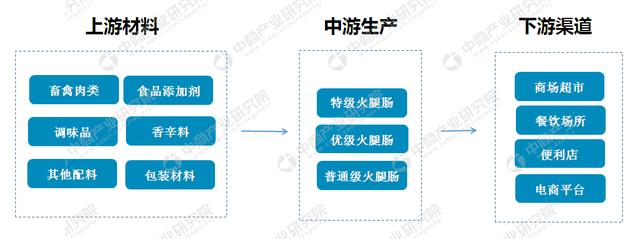
将 SSH 用户会话限制访问到特定的目录内,特别是在 web 服务器上,这样做有多个原因,但最显而易见的是为了系统安全。为了锁定 SSH 用户在某个目录,我们可以使用 chroot 机制。 -- Aaron Kili
本文导航
-步骤 1:创建 SSH chroot 监狱 …… 09%
-步骤 2:为 SSH chroot 监狱设置交互式 shell …… 29%
-步骤 3:创建并配置 SSH 用户 …… 38%
-步骤 4:配置 SSH 来使用 chroot 监狱 …… 46%
-步骤 5:测试 SSH 的 chroot 监狱 …… 53%
-步骤 6: 创建用户的主目录并添加 Linux 命令 …… 64%
-步骤 7:测试 sftp 的 用 chroot 监狱 …… 79%
编译自: http://www.tecmint.com/restrict-ssh-user-to-directory-using-chrooted-jail/作者: Aaron Kili
译者: geekpi
将 SSH 用户会话限制[1]访问到特定的目录内,特别是在 web 服务器上,这样做有多个原因,但最显而易见的是为了系统安全。为了锁定 SSH 用户在某个目录,我们可以使用 chroot 机制。
列出所需文件
3、 现在,使用 mknod 命令创建 /dev 下的文件。在下面的命令中,-m 标志用来指定文件权限位,c 意思是字符文件,两个数字分别是文件指向的主要号和次要号。
# mkdir -p /home/test/dev/# cd /home/test/dev/
# mknod -m 666 null c 1 3
# mknod -m 666 tty c 5 0
# mknod -m 666 zero c 1 5
# mknod -m 666 random c 1 8
创建 /dev 和所需文件
4、 在此之后,在 chroot 监狱中设置合适的权限。注意 chroot 监狱和它的子目录以及子文件必须被 root 用户所有,并且对普通用户或用户组不可写:
# chown root:root /home/test# chmod 0755 /home/test
# ls -ld /home/test
设置目录权限
步骤 2:为 SSH chroot 监狱设置交互式 shell5、 首先,创建 bin 目录并复制 /bin/bash 到 bin 中:
# mkdir -p /home/test/bin# cp -v /bin/bash /home/test/bin/
复制文件到 bin 目录中
6、 现在,识别 bash 所需的共享库,如下所示复制它们到 lib64 中:
# ldd /bin/bash# mkdir -p /home/test/lib64
# cp -v /lib64/{libtinfo.so.5,libdl.so.2,libc.so.6,ld-linux-x86-64.so.2} /home/test/lib64/
复制共享库文件
步骤 3:创建并配置 SSH 用户7、 现在,使用 useradd 命令[3]创建 SSH 用户,并设置安全密码:
# useradd tecmint# passwd tecmint
8、 创建 chroot 监狱通用配置目录 /home/test/etc 并复制已更新的账号文件(/etc/passwd 和 /etc/group)到这个目录中:
# mkdir /home/test/etc# cp -vf /etc/{passwd,group} /home/test/etc/
复制密码文件
注意:每次向系统添加更多 SSH 用户时,都需要将更新的帐户文件复制到 /home/test/etc 目录中。
步骤 4:配置 SSH 来使用 chroot 监狱9、 现在打开 sshd_config 文件。
# vi /etc/ssh/sshd_config在此文件中添加或修改下面这些行。
# 定义要使用 chroot 监狱的用户Match User tecmint
# 指定 chroot 监狱
ChrootDirectory /home/test
配置 SSH chroot 监狱
保存文件并退出,重启 sshd 服务:
# systemctl restart sshd或者
# service sshd restart
步骤 5:测试 SSH 的 chroot 监狱10、 这次,测试 chroot 监狱的设置是否如希望的那样成功了:
# ssh tecmint@192.168.0.10-bash-4.1$ ls
-bash-4.1$ date
-bash-4.1$ uname
测试 SSH 用户 chroot 监狱
从上面的截图上来看,我们可以看到 SSH 用户被锁定在了 chroot 监狱中,并且不能使用任何外部命令如(ls、date、uname 等等)。
用户只可以执行 bash 以及它内置的命令(比如:pwd、history、echo 等等):
# ssh tecmint@192.168.0.10-bash-4.1$ pwd
-bash-4.1$ echo "Tecmint - Fastest Growing Linux Site"
-bash-4.1$ history
SSH 内置命令
步骤 6: 创建用户的主目录并添加 Linux 命令11、 从前面的步骤中,我们可以看到用户被锁定在了 root 目录,我们可以为 SSH 用户创建一个主目录(以及为所有将来的用户这么做):
# mkdir -p /home/test/home/tecmint# chown -R tecmint:tecmint /home/test/home/tecmint
# chmod -R 0700 /home/test/home/tecmint
创建 SSH 用户主目录
12、 接下来,在 bin 目录中安装几个用户命令,如 ls、date、mkdir:
# cp -v /bin/ls /home/test/bin/# cp -v /bin/date /home/test/bin/
# cp -v /bin/mkdir /home/test/bin/
向 SSH 用户添加命令
13、 接下来,检查上面命令的共享库并将它们移到 chroot 监狱的库目录中:
# ldd /bin/ls# cp -v /lib64/{libselinux.so.1,libcap.so.2,libacl.so.1,libc.so.6,libpcre.so.1,libdl.so.2,ld-linux-x86-64.so.2,libattr.so.1,libpthread.so.0} /home/test/lib64/
复制共享库
步骤 7:测试 sftp 的 用 chroot 监狱14、 最后用 sftp 做一个测试;测试你先前安装的命令是否可用。
在 /etc/ssh/sshd_config 中添加下面的行:
# 启用 sftp 的 chroot 监狱ForceCommand internal-sftp
保存并退出文件。接下来重启 sshd 服务:
# systemctl restart sshd或者
# service sshd restart
15、 现在使用 ssh 测试,你会得到下面的错误:
# ssh tecmint@192.168.0.10
测试 SSH Chroot 监狱
试下使用 sftp:
# sftp tecmint@192.168.0.10
测试 sFTP SSH 用户
建议阅读: 使用 chroot 监狱将 sftp 用户限制在主目录中[4]。
就是这样了!在文本中,我们向你展示了如何在 Linux 中限制 ssh 用户到指定的目录中( chroot 监狱)。请在评论栏中给我们提供你的想法。
作者简介:
Aaron Kili 是一个 Linux 及 F.O.S.S 热衷者,即将成为 Linux 系统管理员、web 开发者,目前是 TecMint 的内容创作者,他喜欢用电脑工作,并坚信分享知识。
via: http://www.tecmint.com/restrict-ssh-user-to-directory-using-chrooted-jail/
作者:Aaron Kili[5] 译者:geekpi 校对:jasminepeng
本文由 LCTT 原创编译,Linux中国 荣誉推出
,
[1]: SSH 用户会话限制 - http://www.tecmint.com/restrict-sftp-user-home-directories-using-chroot/
[2]: sudo 命令 - https://linux.cn/tag-sudo.html
[3]: useradd 命令 - http://www.tecmint.com/add-users-in-linux/
[4]: 使用 chroot 监狱将 sftp 用户限制在主目录中 - http://www.tecmint.com/restrict-sftp-user-home-directories-using-chroot/
[5]: Aaron Kili - http://www.tecmint.com/author/aaronkili/


















